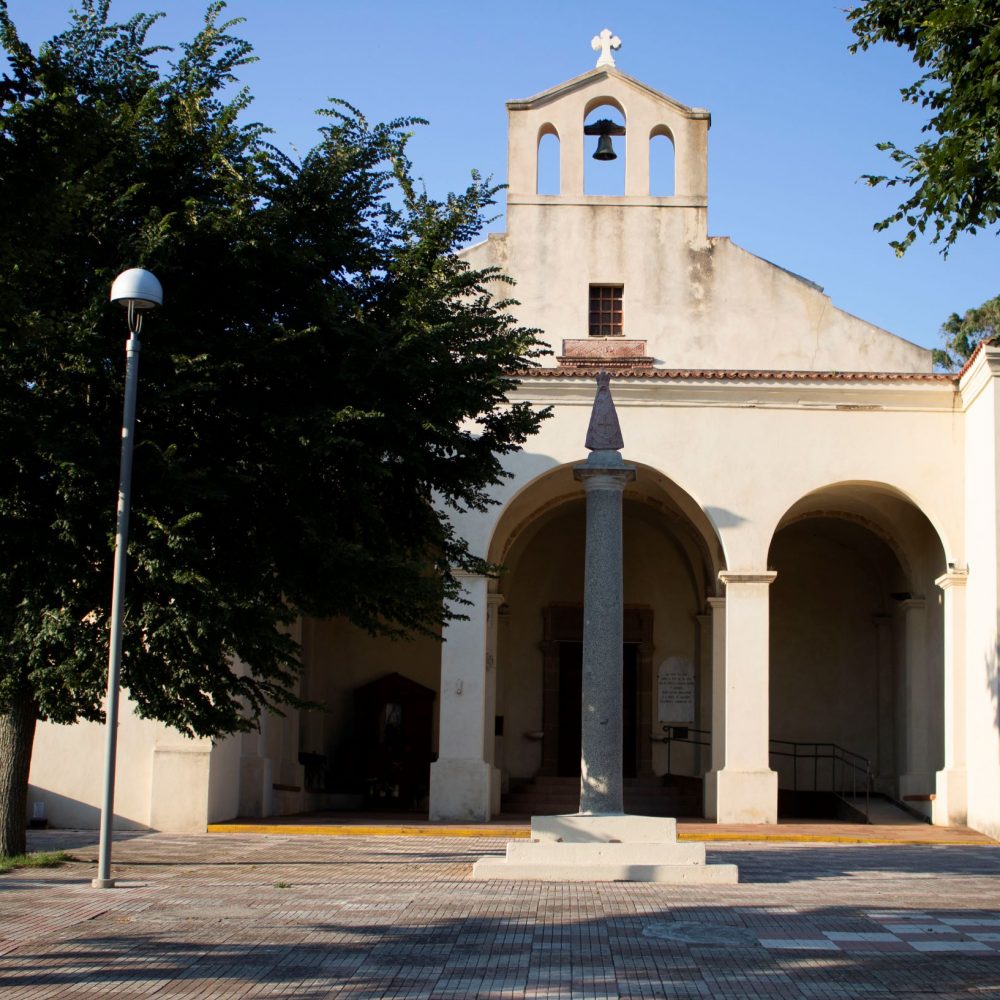Madonna di Valverde
With the bull Augustissimam coeli Reginam, of 25 March 1949, Pius XII proclaimed Nostra Senyora de Vallverd, Our Lady of Valverde whose feast day is May 26th, co-patron of the city and of the diocese.
The devotion of Alghero’s citizens to the Madonna di Valverde is very much alive, in fact, numerous popular tales and songs are dedicated to her.
The history of this devotion is difficult to fully understand, as over the centuries it has been etched into the memory and interwoven into the secrets of the people of Alghero, and its retelling is enriched with legendary facts and episodes.
In the 33-cm-tall figurine, the Madonna holds the Infant Jesus in her left arm.
According to some tales, the work is said to have been modelled from clay dried in the heat of the sun, while others claim that the material used is the earth bathed in the blood of the martyrs. It is Romanesque in style and can be dated from the eighth to the tenth century, although local folklore dates it even further back.
In any case, the people’s devotion remains steadfast; in times of need as well as the constant dangers of the sea, they have always turned to the Madonna di Valverde, to seek grace, help or comfort.
For centuries, thousands of pilgrims have travelled daily, on foot and through prayer, the seven kilometres that separate Alghero from Valverde; others made their way along the paths which, winding through the countryside and woods, from Villanova Monteleone or Putifigari, lead to the Sanctuary.
The Madonna di Valverde has worn various crowns, all precious and priceless. The first, from reliable historical sources, dates from 1698 made of solid gold thanks to ex-votos from the faithful, while the most recent was given to the Madonna on May 26, 2002 in a solemn ceremony. The precious ornament was always made from the small objects donated by the devoted, embellished with coral, the city’s emblem, which however was strangely absent in the various crowns that have been donated over the centuries.
Between the sixteenth and eighteenth centuries the popular tradition of ex votos spread becoming a means of, sometimes elementary but always very communicative, pictorial expression in which the faithful portrayed their devotion and gratitude.
These paintings are a testament to the faith, and also a snapshot of the singular and unique episodes of the life of the people of Alghero. They translate tangibly the needs of the people, the hopes and graces obtained and in some cases tell of miracles.


Following the recent restorations by the Superintendency, the various ex votos have been categorised into topics: some depict the graces of the sea, those of the countryside, healings, protection from misfortunes, the return from war. The most significant are displayed on the walls of the side chapels of the sanctuary, others, however, have found a permanent home in the Museum of the Valverde Sanctuary at the behest of Don Nughes.
